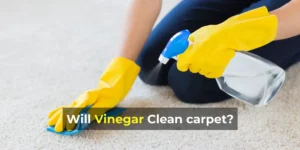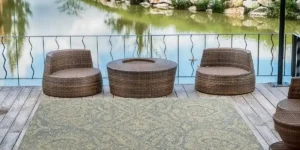Picture this: you’ve just invested in a beautiful vinyl plank floor to give your home a fresh and stylish look.
Everything seems perfect until you notice an unexpected problem – buckling.
If you’re scratching your head and wondering why your vinyl plank floor is buckling, you’re not alone.
Buckling vinyl plank floors can be a frustrating and puzzling issue for many homeowners.
But fear not! In this guide, I have unraveled the mystery behind why your vinyl plank floor is buckling.
And provide you with simple, no-nonsense solutions.
Whether you’re dealing with a minor annoyance or a major eyesore.
We’ve got you covered with a step-by-step guide to help you fix that problem.
So, let’s dive in and discover the common reasons behind vinyl plank floors buckling.
And learn how to get your floors back to looking pristine in no time.
6 Reasons Why Your Vinyl Plank Floor Buckling
1. Extreme Temperature Changes
Most people don’t know that vinyl plank flooring is sensitive to extreme temperature changes.
It causes the flooring to expand and contract. Due to expansion and contraction, the planks will shift and buckle over time.
Buckling occurs due to lateral pressure when planks expand in extreme heat. This pressure causes cramping.
Cold weather causes the planks to contract, causing gaps to form between the vinyl floors.
Similarly, planks that get direct sunlight are more likely to buckle because they get more heat.
Because heat weakens the bond between the planks and the glue. Which allows the planks to shift and buckle over time.
This phenomenon is seen on vinyl plank floors with fiberglass inner layers.
So, if you want to cut heat-induced expansion, you should use these tips. They include:
- Install UV Film or Glass Tint: Install a UV film or glass tint on windows, doors, and sliding windows. To reduce the effects of sunlight or block the passage of UV light into a room
- Hang Thermal Curtains: Or, you may hang curtains. To limit sunlight coming from the above-mentioned areas to cut flooring damage.
- Install Luxurious Vinyl Flooring: Luxurious vinyl plank flooring is expensive. Yet, it is more resistant to extreme temperature changes than inexpensive options.
You Must See:
- Does Vinyl Flooring Fade in the Sun? (6 Ways to Prevent From Fading)
- Do I Need Expansion Gaps for Vinyl Flooring? (Explained)
2. Trapped Moisture Underneath the Planks
Moisture weakens the adhesive that binds the planks to the concrete floor.
Making the vinyl floor susceptible to moisture intrusions.
A loose seam between the planks can also allow water to seep through and cause mold to grow.
Thus, the planks will be separated, provoking the flooring to buckle.
It is most common for kitchens, bathrooms, and high-traffic areas to buckle due to moisture.
The following tips will lessen moisture absorption. This will stop the buckling caused by moisture seeping.
- Install Waterproof Vinyl Flooring: Install waterproof vinyl plank flooring in areas that tend to be damp or humid. Such as the kitchen, bathroom, and high-traffic areas.
- Install Moisture Barrier: It is advisable to install a moisture barrier over the subfloor. This will prevent moisture from dripping through the planks when installed.
- Place a Dehumidifier: Install a dehumidifier so you can reduce the chance of moisture accumulating on the planks.
- Use High-Quality Adhesive: Use an adhesive that is both heat-resistant and moisture-resistant. For prevention of moisture seeping through plank seams.
You Must See:
- Can Mold Grow Under Vinyl Plank Flooring? (Answered)
- The Best Way to Level a Concrete Floor For Laminate Flooring (Must Read!)
3. Not Providing Breathing Space
While installing the vinyl floor, most people flush the planks to the wall.
That causes the planks to buckle. Because vinyl flooring needs breathing room for expansion and contraction.
Since the planks can’t expand, they will bend and lift to make room for other planks to expand.
So, do not install the vinyl floor flush or next to the vertical wall.
Instead, leave a 1/2 or 1/4 of an inch perimeter around where you lay the planks so that there is room for the vinyl to breathe.
Must See: Do I Need Expansion Gaps for Vinyl Flooring? (Explained)
4. Dragging Over the Vinyl Plank Flooring
Vinyl flooring is well known due to its durability and straightforward installation process.
Yet, poor maintenance can cause the vinyl floor to shift and buckle.
Like dragging or moving heavy objects or furniture over and across the floor.
This creates too much pressure on the planks because that heavy object will pull the planks apart.
Causing them to buckle while leaving ugly scratches on them.
To avoid this issue, lift heavy items above the floor surface to avoid putting pressure on the planks.
Moreover, if you intend to move a heavy object, place felt pads under it to protect your vinyl floor.
Must See: 5 Best Ways to Protect Vinyl Flooring From Heavy Furniture (Tried & Tested!)
5. Using Low-Quality Adhesive
A low-quality adhesive cannot resist moisture or high temperatures for a long period.
The planks start to buckle and come apart. Because the adhesive is not effective against moisture and heat.
We recommend using an adhesive that can withstand both high temperatures and moisture.
The adhesive should also be able to handle the expansion and contraction of the wood due to temperature changes.
Moreover, it should be resistant to UV radiation. And be able to adhere to the planks properly, allowing them to stay together for longer periods.
Also See: What’s the best type of adhesive for vinyl floors?
6. The Unevenness of the Subfloor
Another reason is a poorly leveled or uneven subfloor.
It makes the planks appear bumpy on the floor, which increases the risk of hitting the plank seams.
Continuous hitting of the bumpy seams releases the adhesive from the planks thus leading to buckling.
Before installing any type of vinyl plank flooring, ensure the subfloor is even.
This will help the vinyl floor resonate with the subfloor’s evenness.
How to Fix Vinyl Plank Flooring Buckling?

Follow the steps below to help you stop or repair buckled vinyl plank flooring.
Step 1: Remove the Wall Molding
Start by removing the wall molding around the wall perimeter.
By doing so you can easily reach and remove the planks that need to be replaced.
Step 2: Remove the Adjacent Planks
Then, remove the planks closest to the wall. Continue removing the neighboring plank in that row until you arrive at the damaged plank.
Step 3: Remove the Damaged Plank
Now the fun starts. Take out the damaged plank, install a new one, and lock it in place.
Make sure you measure the plank before installing it. Clean the area where the plank was removed.
Sand the area and refinish it to match the surrounding floor.
Step 4: Change the Other Planks
Place back the old planks while moving towards the floor and make sure you lock the planks as initially.
Step 5: Put the Molding Back in Place
Reinstall the molding. Make sure to press the molding firmly into place.
Use a putty knife or a thin piece of cardboard to smooth out any rough edges.
Finally, use a scraper to clean up excess glue. You are done!
How to Fix Glue-Down Vinyl Plank Flooring Buckling?
Unlike click-together or loose-lay, fixing buckling glue-down vinyl planks is straightforward.
That’s because it does not need you to remove planks from the wall towards the one that needs to be replaced.
Instead, you should dislodge the damaged plank. Remove the old adhesive, clean the surface, and reinstall the plank.
Once the plank is reinstalled, roll over the buckling area with a heavy roller.
This will help with proper adhesion and will cut the risk of buckling. Once this is complete, allow it to cure.
Must See: How to Fix Vinyl Flooring Seams? (A Step By Step Approach)
Tips to Prevent Vinyl Floors from Buckling
Follow these tips to prevent your vinyl flooring from buckling shortly:
- To prevent ground-water slippage and mold growth. Use an effective moisture barrier during installation.
- Use premium adhesives and follow the manufacturer’s instructions. When gluing down vinyl floors, ensure long-term durability.
- The vinyl planks need to be protected from direct sunlight. Protect by using curtains, blinds, or tinting the windows.
- You must roll the floor, as this is needed to secure the flooring down. And prevent buckling soon.
Read More on Vinyl Flooring
- Do I Need Expansion Gaps for Vinyl Flooring? (Explained)
- How to Fix Vinyl Flooring Seams? (A Step By Step Approach)
- How to Fix Gaps in Vinyl Plank Flooring? (5 Easy Steps)
- How to Remove Sticky Residue from Vinyl Flooring? (Full Guide)
- How to Clean Shaw Vinyl Plank Flooring? (Beginners Guide)





